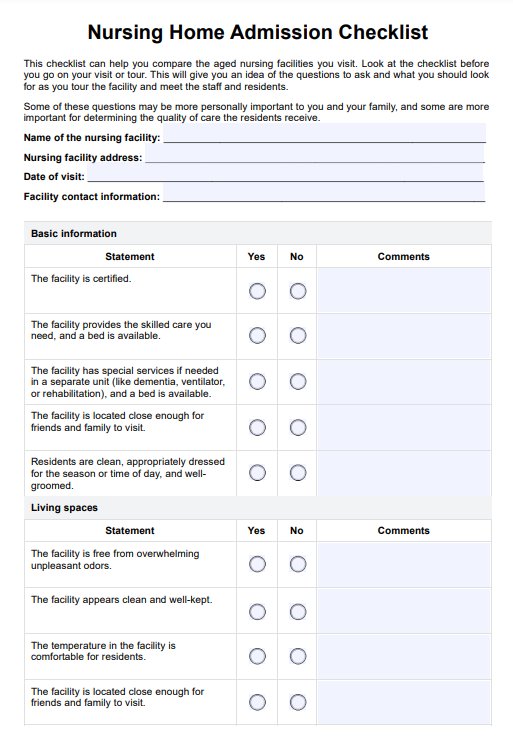To create a comprehensive Nursing Home Admission Checklist, utilize the checklist provided by Carepatron and identify priorities for you and your loved ones from the list that resonate with the kind of care you are seeking.

Nursing Home Admission Checklist
Use a Nursing Home Admission Checklist to help your clients screen the perfect nursing homes for them or their loved ones.
Use Template
Nursing Home Admission Checklist Template
Commonly asked questions
This multi-use tool may come in handy while looking for a nursing home or deciding whether a patient needs to seek nursing home-level care.
These checklists are used in many ways, whether for nursing home hunting, assessing care needs, or facilitating discussions of care priorities between loved ones and patients.
EHR and practice management software
Get started for free
*No credit card required
Free
$0/usd
Unlimited clients
Telehealth
1GB of storage
Client portal text
Automated billing and online payments











